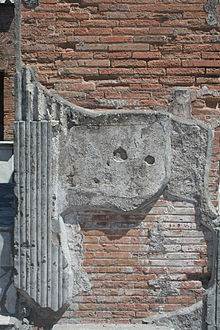
Lime plaster is a type of plaster composed of sand, water, and lime, usually non-hydraulic hydrated lime (also known as slaked lime, high calcium lime or air lime). Ancient lime plaster often contained horse hair for reinforcement and pozzolan additives to reduce the working time.
Traditional non-hydraulic hydrated lime only sets through carbonatation when the plaster is kept moist and access of CO2 from the air is possible. It will not set when submersed in water. When a very thick layer or several layers are applied, the lime can remain soft for weeks.
The curing time of lime plaster can be shortened by using (natural) hydraulic lime or adding pozzolan additives, transforming it into artificially hydraulic lime. In ancient times, Roman lime plaster incorporated pozzolanic volcanic ash; in modern times, fly ash is preferred. Non-hydraulic lime plaster can also be made to set faster by adding gypsum.
Lime production for use in plastering home-made cisterns (in making them impermeable) was especially important in countries where rain-fall was scarce in summer. This enabled them to collect the winter run-off of rain water and to have it stored for later use, whether for personal or agricultural needs.[1]
- ^ Eliyahu-Behar, A.; Yahalom-Mack, N.; Ben-Shlomo, D. (2017). "Excavation and Analysis of an Early Iron Age Lime Kiln", Israel Exploration Journal 67, p. 29